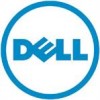Dell OEM Ready Optiplex 760 Service Manual - Page 153
Boot Sequence
 |
View all Dell OEM Ready Optiplex 760 manuals
Add to My Manuals
Save this manual to your list of manuals |
Page 153 highlights
NOTE: To set Client IP you must set Client DHCP to Static IP Client SubnetMask Specifies the subnet mask for the client. The default setting is 255.255.255.255 Client Gateway NOTE: To set Client SubnetMask you must set Client DHCP to Static IP Specifies the gateway IP address for the client. The default setting is 255.255.255.255 License Status NOTE: To set Client SubnetMask you must set Client DHCP to Static IP Displays the current license status. Post Behavior Fast Boot When enabled (default), your computer starts more quickly because it skips certain configurations and tests. NumLock LED Enables or disables the NumLock feature when your computer starts. When enabled (default), this option activates the numeric and mathematical features shown at the top of each key. When disabled, this option activates the cursor-control functions labeled on the bottom of each key POST Hotkeys Allows you to specify the function keys to display on the screen when the computer starts. l Enable F2 = Setup (enabled by default) l Enable F12 = Boot menu (enabled by default) Keyboard Errors Enables or disables keyboard error reporting when the computer starts. This option is enabled by default. System Logs BIOS Events Displays the system event log and allows you to: l Clear Log l Mark all Entries Boot Sequence This feature allows you to change the Boot Device Property for devices. Option Settings l Onboard USB Floppy Drive - The computer attempts to boot from the floppy drive. l Onboard SATA Hard Drive - The computer attempts to boot from the hard drive. l USB Device - The computer attempts to boot from a removable device, such as a USB key. l CD/DVD - The computer attempts to boot from the disc drive. Changing the Boot Sequence for the Current Boot You can use this feature, for example, to restart your computer to a USB device, such as a floppy drive, memory key, or optical drive. 1. If you are booting to a USB device, connect the USB device to a USB connector. 2. Turn on (or restart) your computer. 3. When F12 = Boot Menu appears in the upper-right corner of the screen, press . If you wait too long and the operating system logo appears, continue to wait until you see the Microsoft Windows desktop, then shut down your computer and try again. 4. The Boot Menu appears, listing all available boot devices.















